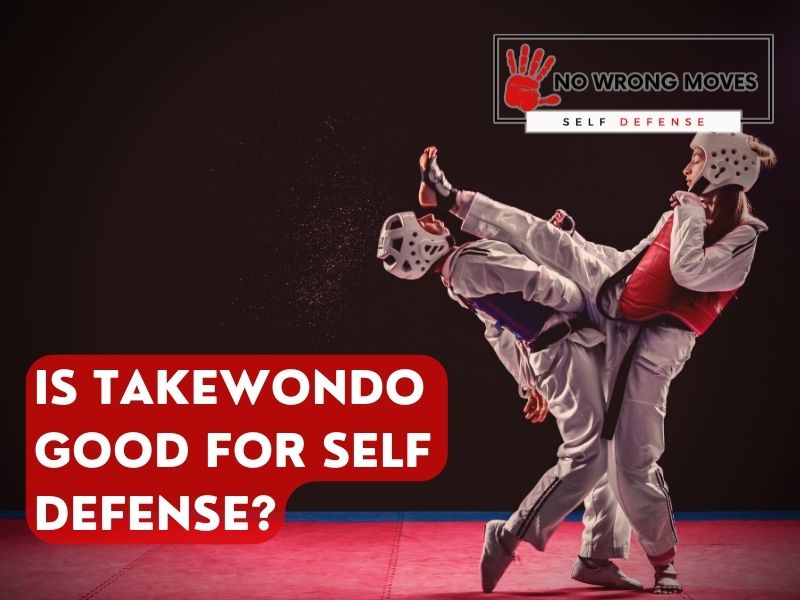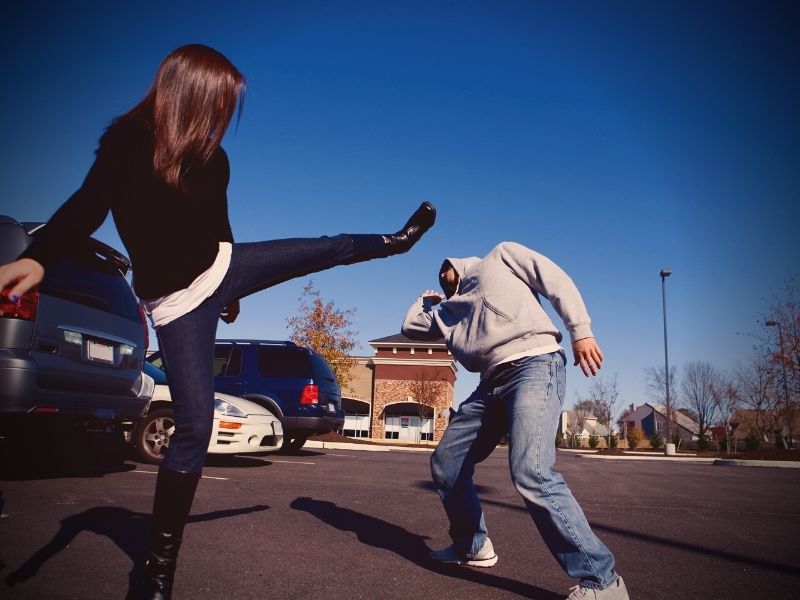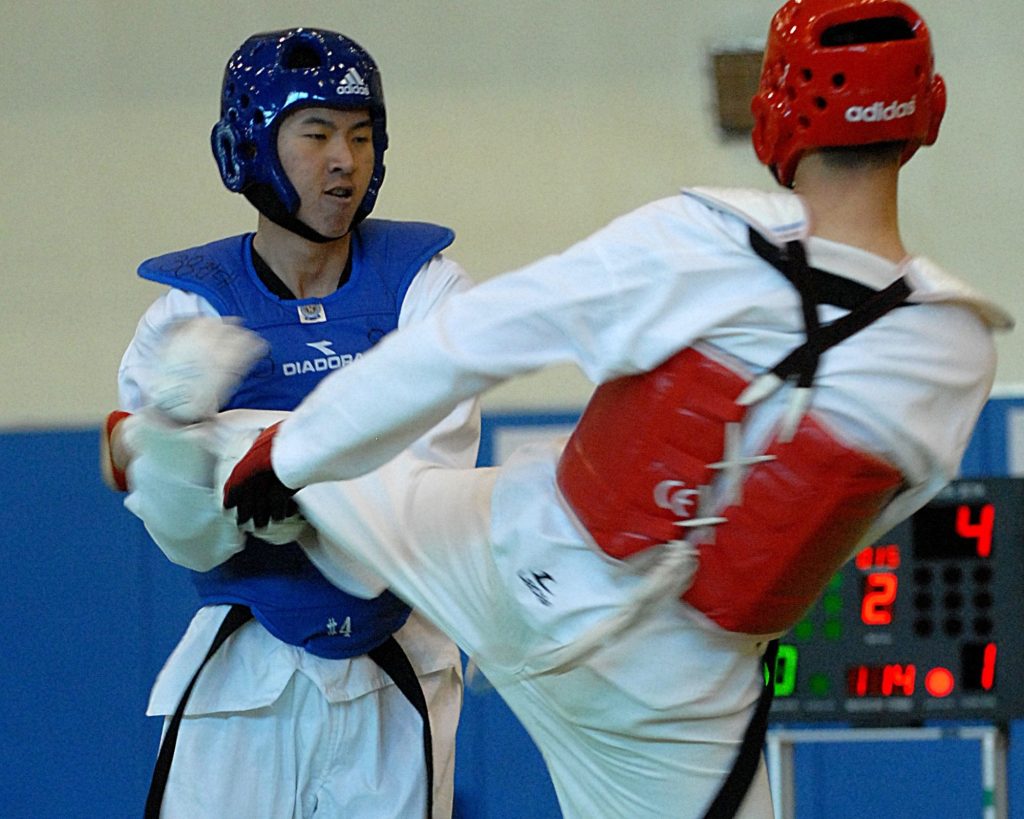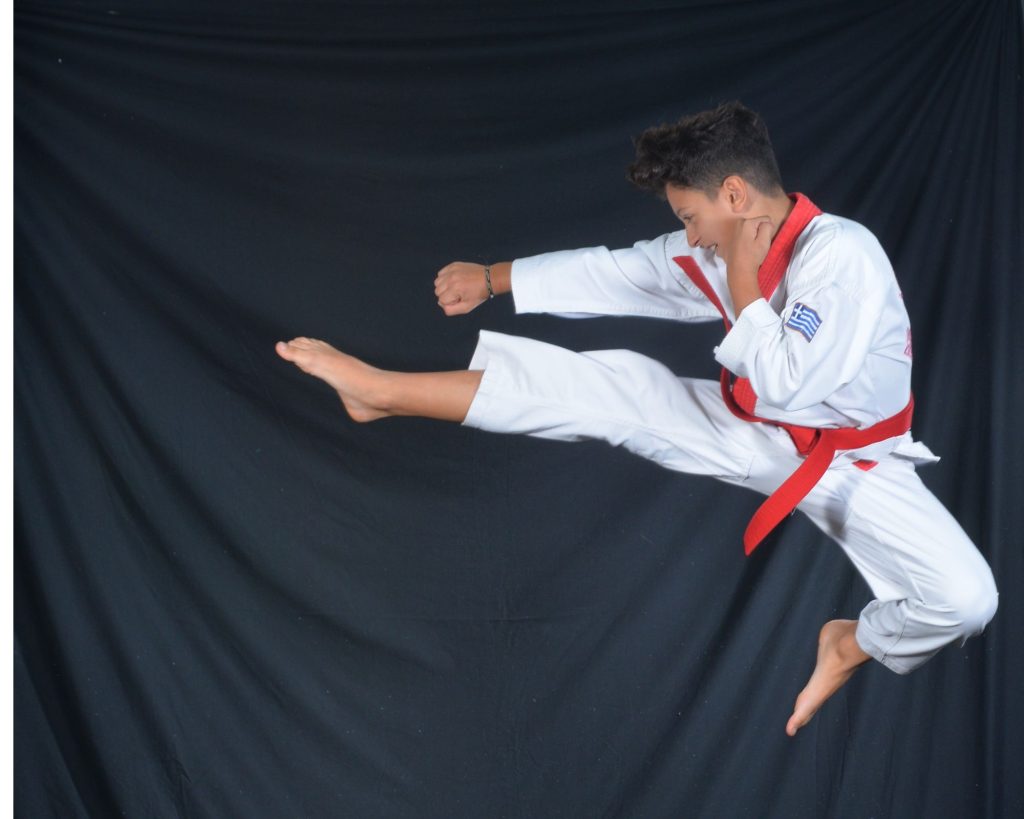
Taekwondo has been gaining steady popularity over the years. With a focus on fast and powerful kicks, powerful techniques, and on stringent self-defense, it's easy to see why. It's an appealing martial art to watch and a satisfying one to learn.
But with so many martial arts out there, it's easy to end up thinking of the question: is taekwondo really that good for self-defense?
In this article, we'll be tackling just that, looking into the pros and cons of taekwondo as a self-defense system and helping you make an informed decision.
The History of Taekwondo

Taekwondo is a martial art that was developed in Korea. It combines combat techniques, self-defense, and sport, and brings them all into one clean package.
The name “taekwondo” itself is composed of three Korean words: 태 (tae), which means “to strike or break with the foot;” 권 (kwun), which means “to strike or break with the hand;” and 도 (do), which means “the way” or “the art.”
You can probably pick up the pieces from there. Taekwondo can be translated as the “way of striking with the foot and hand.”
It originated from the traditional Korean martial arts of taekkyeon and subak, and it received influences from Japanese and Chinese martial arts.
Taekwondo became increasingly popular in the late 1950s and early 1960s, mostly due to its emphasis on kicks, which set it apart from other martial arts at the time.
Taekwondo emphasizes physical fitness, discipline, and the cultivation of a strong mind and spirit. Practitioners focus on kicks, blocks, punches, and strikes with the hands and feet, but they also learn joint locks and throws.
Taekwondo has been an Olympic sport since 2000, with sparring being its main event.
How Effective Is Taekwondo For Self-Defense?

Taekwondo is a martial art that has been used for self-defense for centuries. It is very effective in this regard, and it can be used to protect oneself against attackers regardless of either their size or their attacker's.
Taekwondo is a very powerful martial art that can easily disable an attacker. In general, while there definitely are some better options out there, like wrestling or BJJ, learning how to use taekwondo effectively for self-defense is still a wonderful idea, and it can be a lifesaver in dangerous situations.
How Effective Is Taekwondo In A Street Fight?

So we know that taekwondo is a Korean martial art that's known for its striking and kicking techniques, and that this has helped it become a very popular form of self-defense, one that's practiced by people all over the world.
But how effective is taekwondo actually in a street fight?
Taekwondo practitioners believe that the best way to defend yourself is to avoid getting hit in the first place. They train to be very agile and to have incredible reflexes so that they can dodge or block an attacker’s strikes.
While this may work in a sportive setting, it may not be as effective in a street fight, mostly since there are no rules to be followed and anything goes.
An attacker in a street fight is more likely to be aggressive and to have no regard for your safety. They will have no qualms with causing serious bodily harm. They may also be armed with a weapon, which makes things even more complicated and dangerous.
So while taekwondo can be an effective form of self-defense, you should be aware of its limitations and always be prepared for the worst-case scenario.
Why Choose To Learn Taekwondo Over Another Discipline?

There are lots of wonderful reasons to choose taekwondo over something else. Just a few of them would be:
- Well-rounded: taekwondo is an excellently well-rounded martial art that grants its practitioners how the physical conditioning, mental fortitude, and tactical acumen to win bouts.
- Safe: compared to most other martial arts, taekwondo is fairly safe. It mostly depends on your own body weight, rather than relying on physical strength or strikes.
- Excellent Exercise: it's a great way overall to improve your flexibility, strength, and overall fitness.
- Stress Relief: taekwondo is an excellent way to get rid of any stress or tension you may be feeling.
Conclusion

We've explored the various aspects of taekwondo, and we've clarified just how valuable it can be as tool for personal protection. With a martial art like taekwondo, practitioners will be able to defend themselves in a variety of situations--provided they have the right skills and mindset.
But still, no martial art can guarantee absolute safety in every circumstance.
The effectiveness of taekwondo as a self-defense tool ultimately depends on a whole bunch of other things, including the skill level and experience of the practitioner, the specific techniques used, and the nature of the attack.
With that said though, with proper training and dedication, taekwondo can be an excellent option for those looking to improve their self-defense capabilities.
Whether you're a beginner or a seasoned martial artist, there's always room to grow and refine your skills.
So if you're looking to enhance your personal safety and build your confidence, taekwondo may be the perfect choice for you. With its combination of physical and mental training, it can help you become a more well-rounded and capable individual, both on and off the mat.
Some FAQs
Key Factors For Choosing a Self-Defense Martial Art?
One of the most important is the type of strikes that are used. For example, arts such as boxing and kickboxing focus on punches and kicks, while muay thai also includes elbows and knees.
Another key factor is the ability to grapple, as this can be very useful in close-quarters combat.
Arts such as Brazilian Jiu Jitsu and Judo place a strong emphasis on grappling, while others such as Karate focus more on strikes. Another consideration is the size and strength of the practitioner, as some arts are better suited to larger or smaller individuals.
Benefits of Martial Arts Self-Defense Training?
Training in a martial art can provide many benefits, both mental and physical. For starters, it can be a great workout.
Martial arts require reliance on both strength and stamina, providing a well-rounded workout for the whole body. In addition, martial arts can help to relieve stress.
The discipline required to master techniques can be very calming, and the focus on breath control can help to ease anxiety.
From a practical perspective, martial arts training can also provide a legal form of self-defense. In many jurisdictions, the use of force is only legal if it is necessary to prevent imminent harm.
However, if one has received training in a martial art and can demonstrate that the force used was reasonable and necessary under the circumstances, then it is more likely to be viewed as self-defense.
Finally, martial arts training can help to promote safety. Not only does it provide skills that can be used in self-defense, but it also helps to develop situational awareness and good judgment. As a result, martial arts training can offer many benefits, both physical and mental.
[author-box-jpx-fitness]
